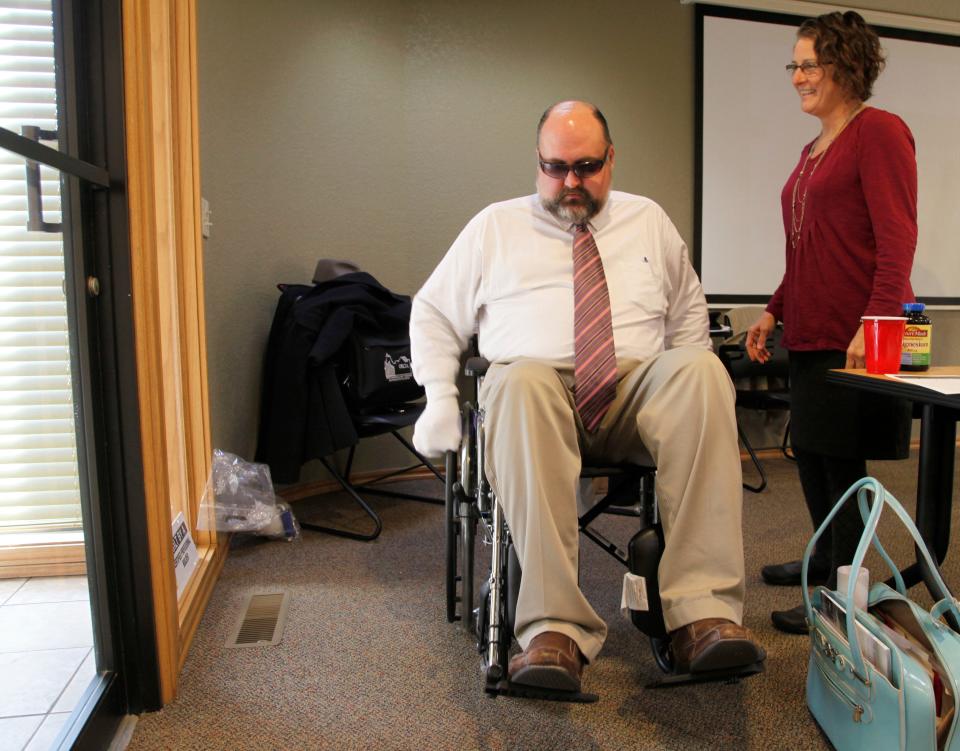Aging in place? Here's how to keep parents, grandparents, and you, from raging in place

Consider me at war with doors, 24-inch doors, specifically — and you probably will be, too, one of these days.
These days came to me this week, the week after foot surgery put me on crutches for the first time ever. Aging in place? Lord, have mercy, it's had me raging in place.
In 1987, when my house was built, I don't think anyone was thinking about how hard it would be for someone who wasn't able bodied to get around — around 90-degree turns in the hallway, over non-flush doorway thresholds, through those blasted narrow doors.
Dear homebuilder, if you are still putting 24-inch doorways in the houses you build, stop it. They're too narrow for anyone on crutches to negotiate well, and impossible for people in some wheelchairs, which range from 25 to 36 inches wide.
More: Oklahoma City artist aims to inspire hope with state's first mental health recovery mural
The Americans with Disabilities Act recommends 32-inch-wide door openings. The National Association of Home Builders recommends 36-inch. Now you're talking.
But this isn't about what the law requires. It's about what I need, and what other folks with physical challenges need, especially older folks, which eventually will be all of us.
Seven years ago, I started becoming something of an expert on aging-in-place and universal design. Lately, I've been living it.
People in the homebuilding business, and out, have been talking about aging-in-place and universal design in construction and remodeling for years. The only major builder to take a deep dive, that I know of, is Ideal Homes & Neighborhoods.
More: Trying to sell your home without a Realtor in OKC? This online method could cost you
Aging-in-place features usually refer to remodeling for aging homeowners and people needing specific home modifications. Universal design refers to features meant for all, aiming for ease of use for anyone in a home, often unnoticeable to non-experts.
Here's an aging-in-place remodeling and construction checklist from the National Association of Home Builders
Building a house? Remodeling one? Here are a few basic suggestions from the National Association of Home Builders:
• Outside: Low-maintenance shrubs and landscaping.
• Floor plan: No steps between rooms, and at least 5-by-5-foot-clear turn space in living areas, the kitchen, a bedroom, and a bathroom.
• Hallways: Well-lit and at least 36 inches wide.
• Thresholds: Make them flush.
• Windows: Lowered windows, or lower sill height for taller windows, with easy to operate hardware.
• Garage/carport: Wider than average.
• Kitchen and laundry: Pull-down shelving, glass-front cabinet doors, open shelving for easy access.
• Bathroom: Brace walls around the tub, shower, shower seat and toilet to support grab bars to support 250 to 300 pounds.
• Ramps: Slope no more than 1 inch of rise for each 12 inches of length, with adequate handrails.
All that is just a start. Go here for more suggestions from the National Association of Home Builders.
Senior business writer Richard Mize has covered housing, construction, commercial real estate, and related topics for the newspaper and Oklahoman.com since 1999. Contact him at rmize@oklahoman.com.
This article originally appeared on Oklahoman: Narrow doorways just one obstacle to aging in place for Baby Boomers
